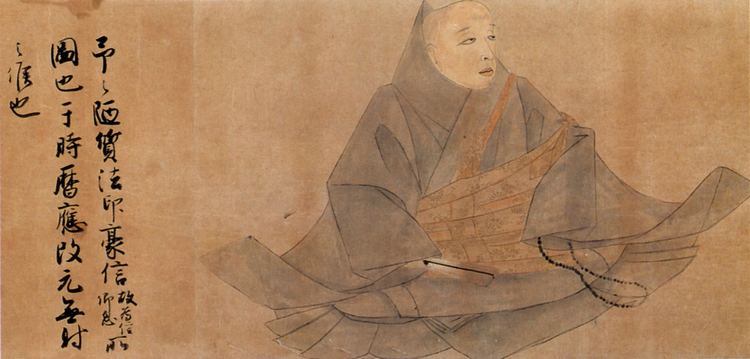Reign 1308–1318 Predecessor Go-Nijo Grandparents Emperor Go-Fukakusa | Name Emperor Hanazono Died December 2, 1348 | |
 | ||
Burial Jirakuu-in no ue no Misasagi (Kyoto) Parents Emperor Fushimi, Toin Sueko Similar People Emperor Jimmu, Kakuei Tanaka, Akihito, Hirohito, Princess Shikishi | ||
Great-grandparents Emperor Go-Saga | ||
Kyoto Mausoleum of Emperor Hanazono Walk / 京都 花園天皇 十楽院上陵 散歩
Emperor Hanazono (花園天皇 Hanazono-tennō) (August 14, 1297 – December 2, 1348) was the 95th emperor of Japan, according to the traditional order of succession. His reign spanned the years from 1308 through 1318.
Contents
- Kyoto Mausoleum of Emperor Hanazono Walk
- Genealogy
- Events of Hanazonos life
- Kugy
- Eras of Hanazonos reign
- References

Genealogy
Before his ascension to the Chrysanthemum Throne, his personal name (his imina) was Tomihito-shinnō (富仁親王).
He was the fourth son of the 92nd Emperor, Fushimi. He belonged to the Jimyōin-tō branch of the Imperial Family.
Events of Hanazono's life
Tomihito-shinnō became emperor upon the abdication of his second cousin, the Daikakuji-tō Emperor Go-Nijō.
Hanazono's father, the retired-Emperor Fushimi, and Hanazono's brother, the retired-Emperor Go-Fushimi, both exerted influence as cloistered emperors during this reign.
In these years, negotiations between the Bakufu and the two imperial lines resulted in an agreement to alternate the throne between the two lines every 10 years (the Bumpō Agreement). This agreement was not long-lasting. The negotiated provisions would soon broken by Hanazono's successor.
In 1318, he abdicated to his second cousin, the Daikakuji-tō Emperor Go-Daigo, who was Nijō's brother.
After his abdication, he raised his nephew, the future Northern Pretender Emperor Kōgon.
In 1335, he became a Buddhist monk of the Zen sect, and under his sponsorship, his palace became the temple of Myōshin-ji, now the largest network in Rinzai Buddhism. Many places and institutions in the area are named for him, including Hanazono University (the Rinzai university) and Hanazono Station.
He died in 1348. Hanazono's imperial tomb is known as Jurakuin no ue no misasagi; it is located in Higashiyama-ku, Kyoto.
He excelled at waka composition, and was an important member of the Kyōgoku School. He also left behind a diary, called Hanazono-in-Minki (Imperial Chronicles of the Flower Garden Temple or Hanazono-in) (花園院宸記). He was a very religious and literate person, never missing his prayers to the Amitabha Buddha.
Kugyō
Kugyō (公卿) is a collective term for the very few most powerful men attached to the court of the Emperor of Japan in pre-Meiji eras. Even during those years in which the court's actual influence outside the palace walls was minimal, the hierarchic organization persisted.
In general, this elite group included only three to four men at a time. These were hereditary courtiers whose experience and background would have brought them to the pinnacle of a life's career. During Hanazono's reign, this apex of the Daijō-kan included:
Eras of Hanazono's reign
The years of Hanazono's reign are more specifically identified by more than one era name or nengō.
